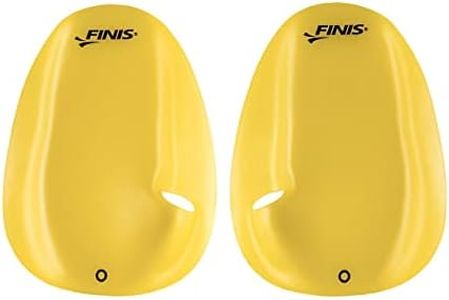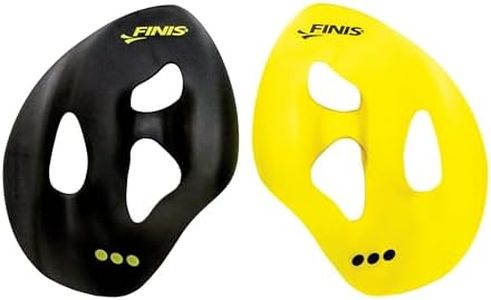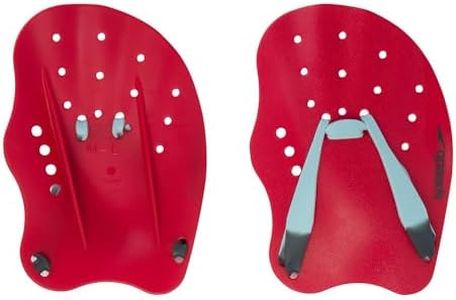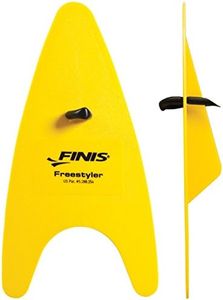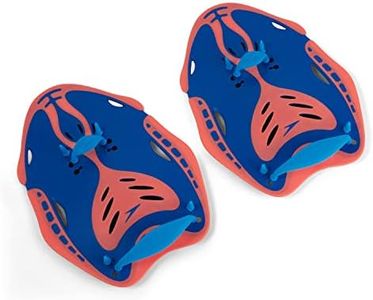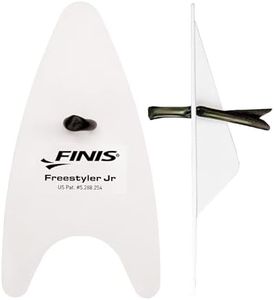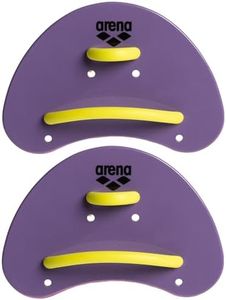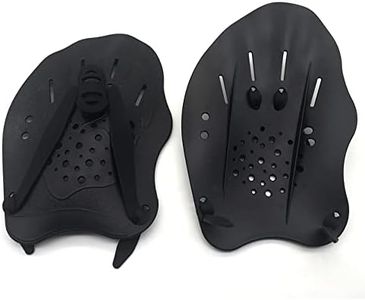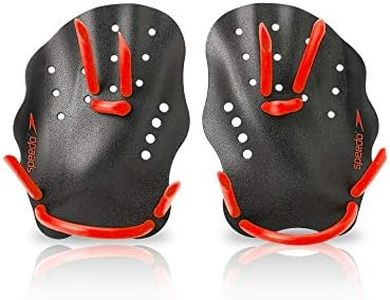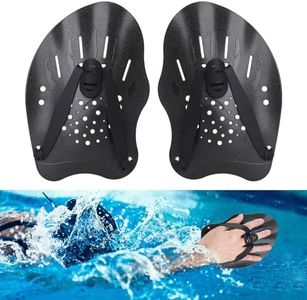We Use CookiesWe use cookies to enhance the security, performance,
functionality and for analytical and promotional activities. By continuing to browse this site you
are agreeing to our privacy policy
10 Best Swim Paddles
From leading brands and best sellers available on the web.Buying Guide for the Best Swim Paddles
Swim paddles are training tools used by swimmers to improve technique, increase upper body strength, and boost propulsion in the water. When choosing swim paddles, it’s essential to balance comfort, safety, and your personal goals. The right swim paddle will enhance your stroke without causing strain or injury. Let’s look at the key factors you should consider while picking the best swim paddles for your needs.Paddle SizePaddle size refers to the surface area of the paddle and can range from small (close to hand size) to extra-large (covering well beyond the hand). Larger paddles create more resistance in the water, helping to build strength but also increasing the risk of shoulder strain, especially for beginners. Smaller paddles are generally easier to control and are safer for developing swimmers. If you're new to swim paddles or focusing on technique, start with small or medium sizes. More experienced or stronger swimmers can gradually move to larger paddles to maximize strength training.
Shape and DesignThe shape and design of a paddle affect how it interacts with the water and supports your hand. Some paddles are flat and wide for maximum power, while others are contoured or have special curves to promote better hand positioning and technique. If you want to focus on improving your stroke technique, pick paddles with ergonomic designs or contours that encourage proper hand entry. For pure strength training, flat or classic wide paddles may be appropriate. Always ensure the paddle feels comfortable and doesn't force your hand into an unnatural position.
Strap SystemStrap systems hold the paddles onto your hands. These can be single-finger, two-finger, or full-hand straps, and some paddles are strapless altogether, relying on grip and water pressure. Multi-strap paddles offer more security, which is good for fast swimming or beginners who want to focus on stroke mechanics without worrying about slippage. Strapless or minimal-strap paddles help you refine technique because they will slip off if your stroke is incorrect. Choose a strap system based on your current swimming confidence and your focus, whether on stability or skill refinement.
MaterialMost swim paddles are made from plastics or silicone. Hard plastics provide more rigidity and strength-building resistance but can be less forgiving on the hands and shoulders. Silicone and softer plastics are gentler, more flexible, and can be more comfortable for long sessions or technique drills. If you want maximum resistance and don’t have any shoulder issues, hard paddles are effective. For those prone to discomfort or looking for a gentle introduction, opt for softer materials.
Ventilation HolesVentilation holes (small holes in the paddle) serve two purposes: they reduce the total resistance and help you keep a natural feel of the water. More and larger holes mean less resistance and a paddle that feels more like your natural hand. Fewer or no holes make the paddle resistant and challenging. Beginners or those focusing on technique should choose paddles with more holes, while advanced swimmers looking for a tough workout may prefer fewer holes.
Hand Fit and ComfortA paddle should sit comfortably against your palm, matching your hand’s shape as closely as possible. Poor fit can cause discomfort, chafing, or improper technique. Many paddles come in different shapes and sizes to suit different hand types. Prioritize a paddle that matches your palm size and feels comfortable through your full range of stroke motion. Trying paddles of various shapes can help you find the most natural fit.
